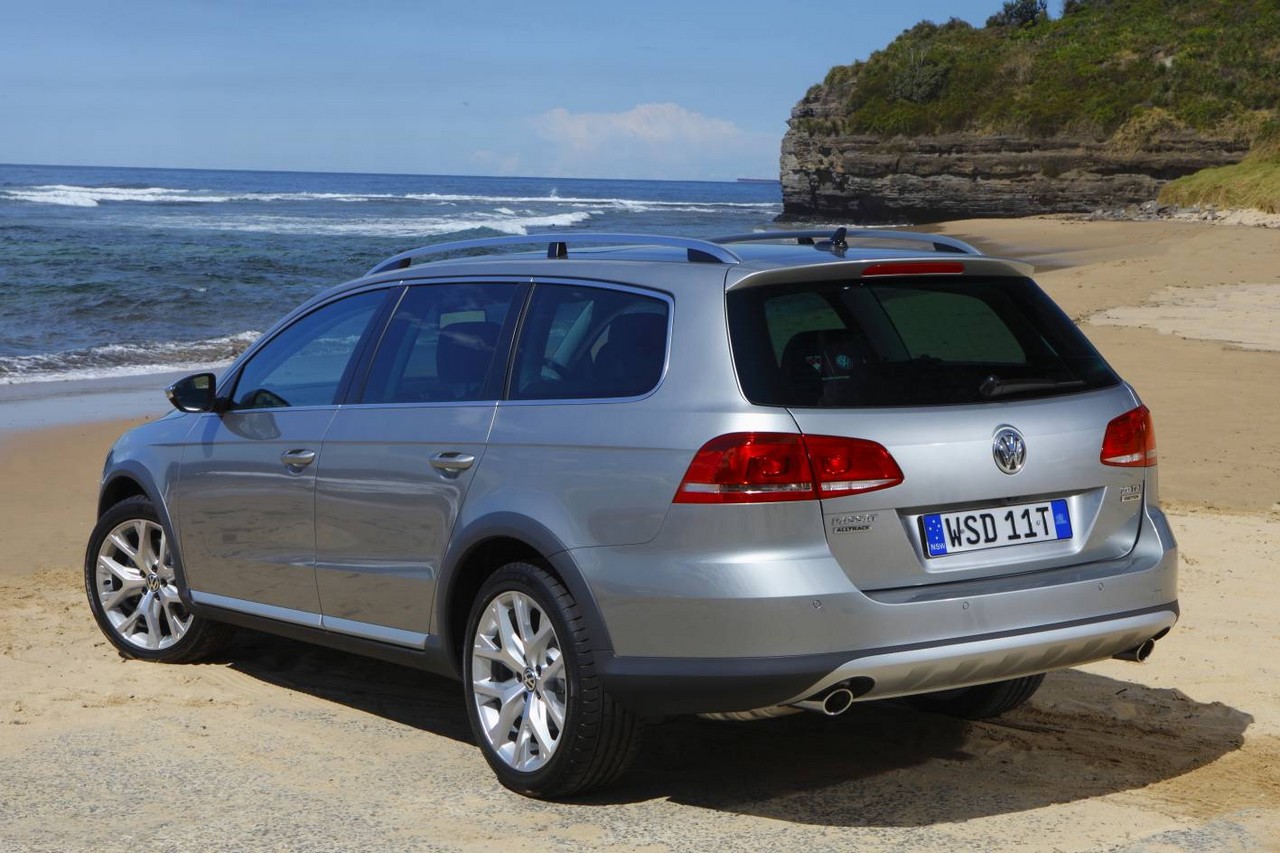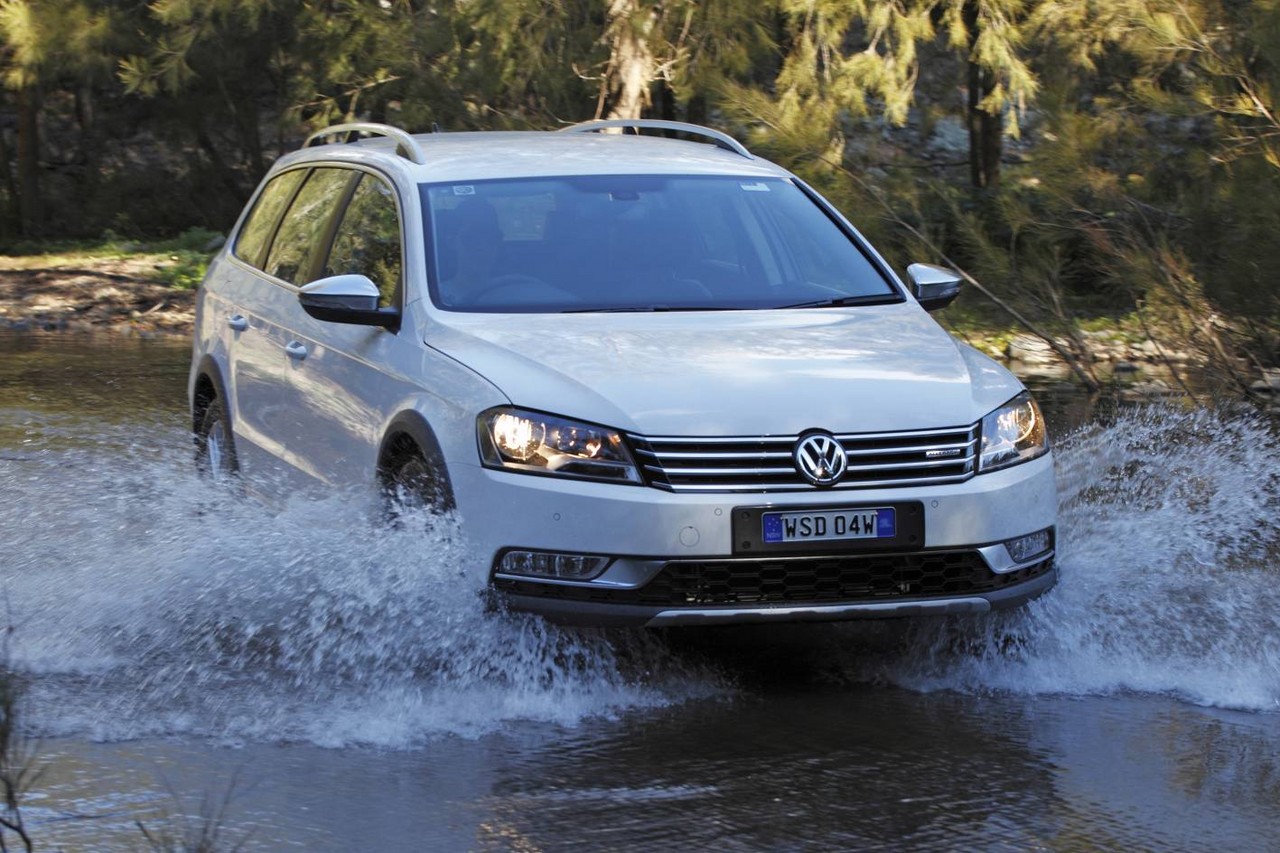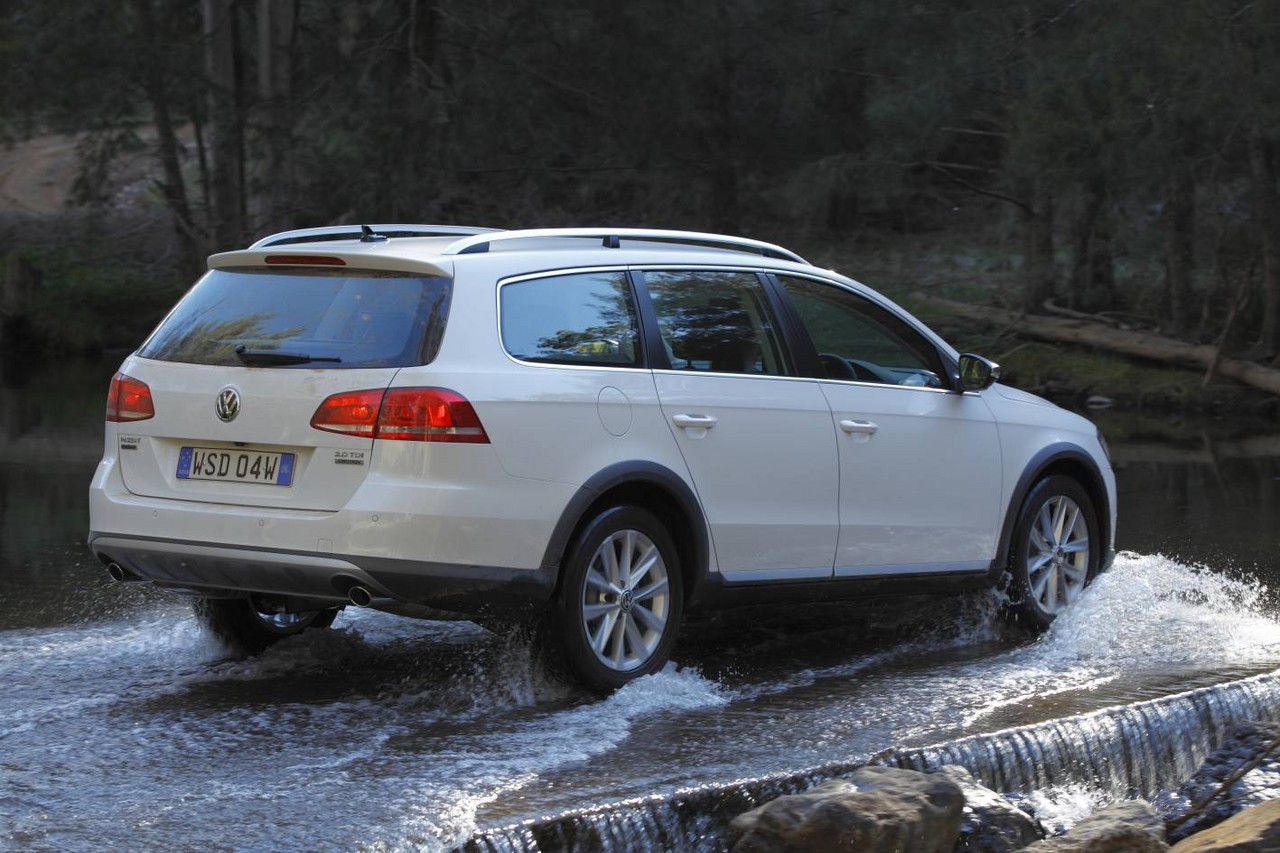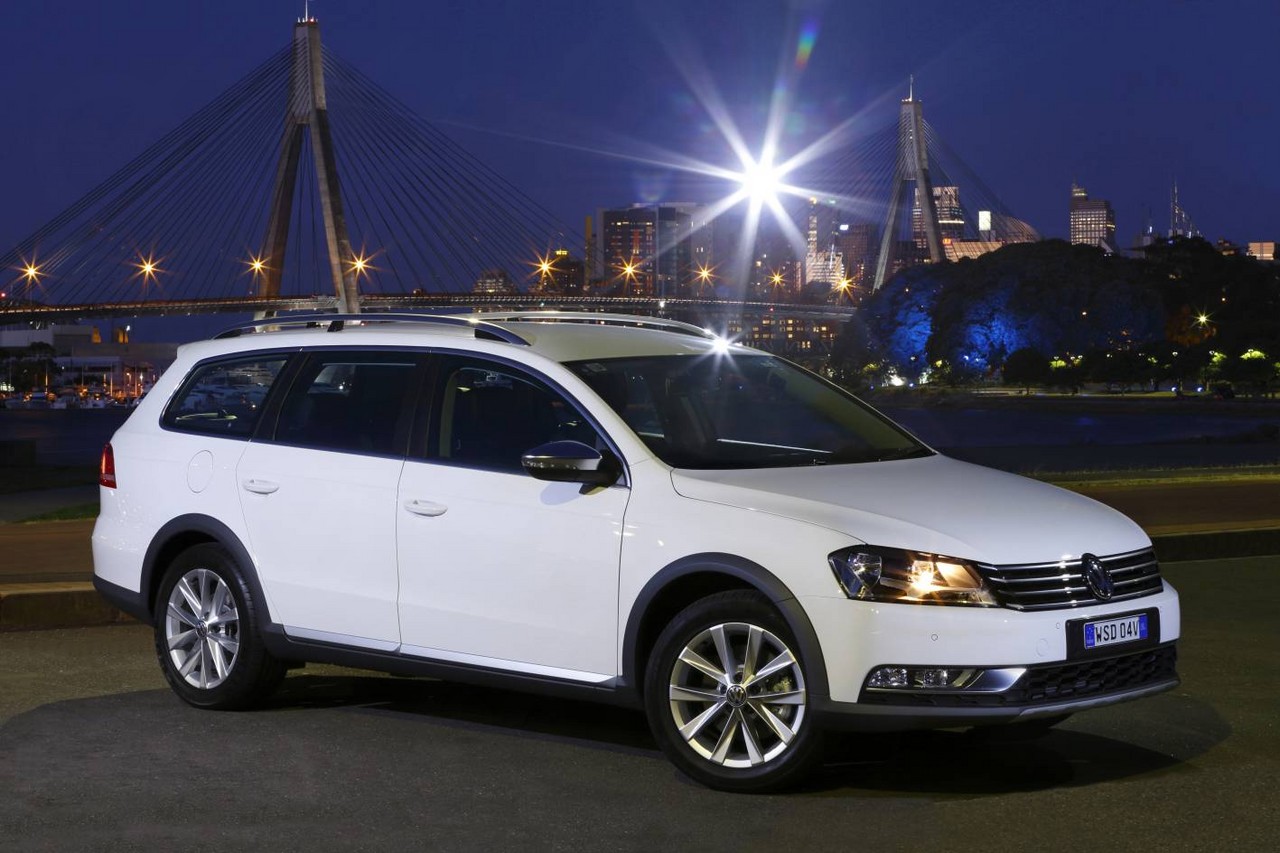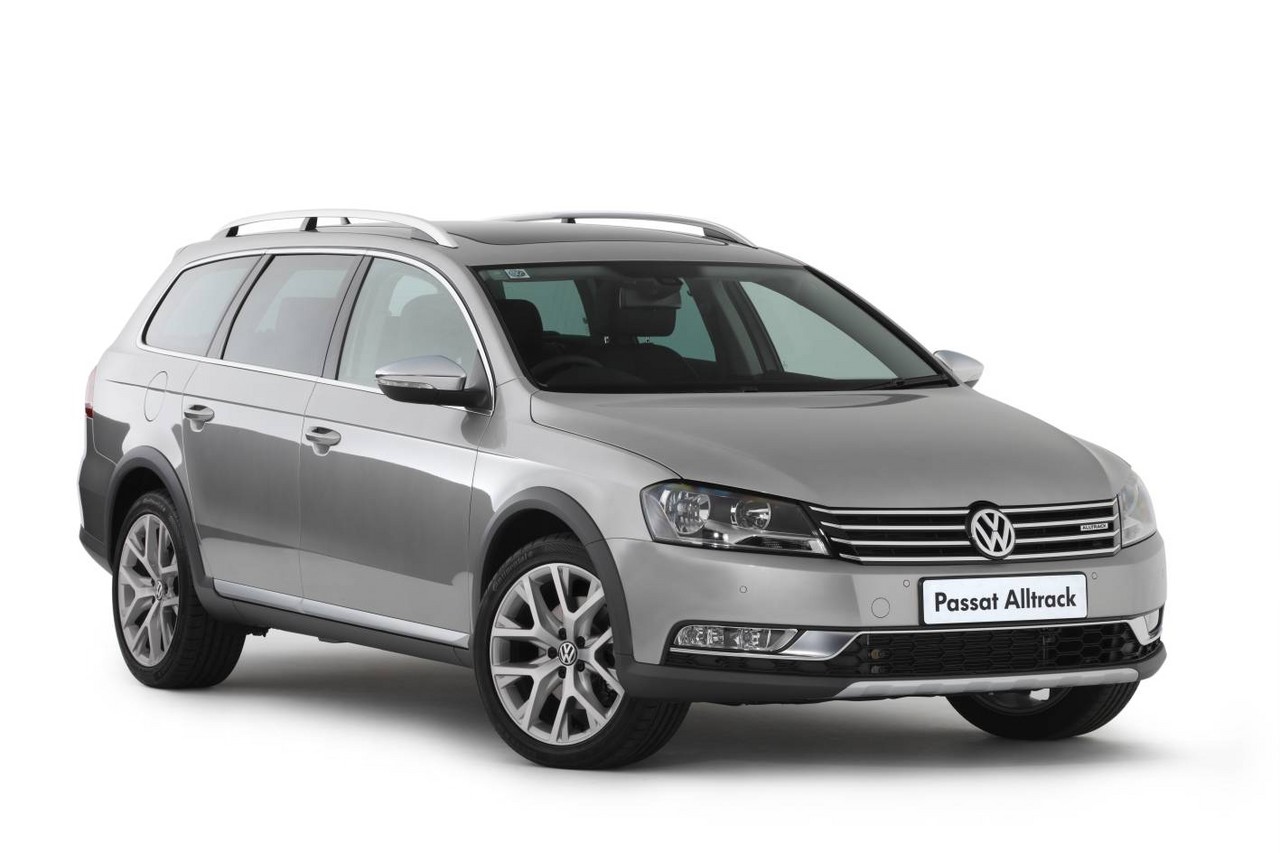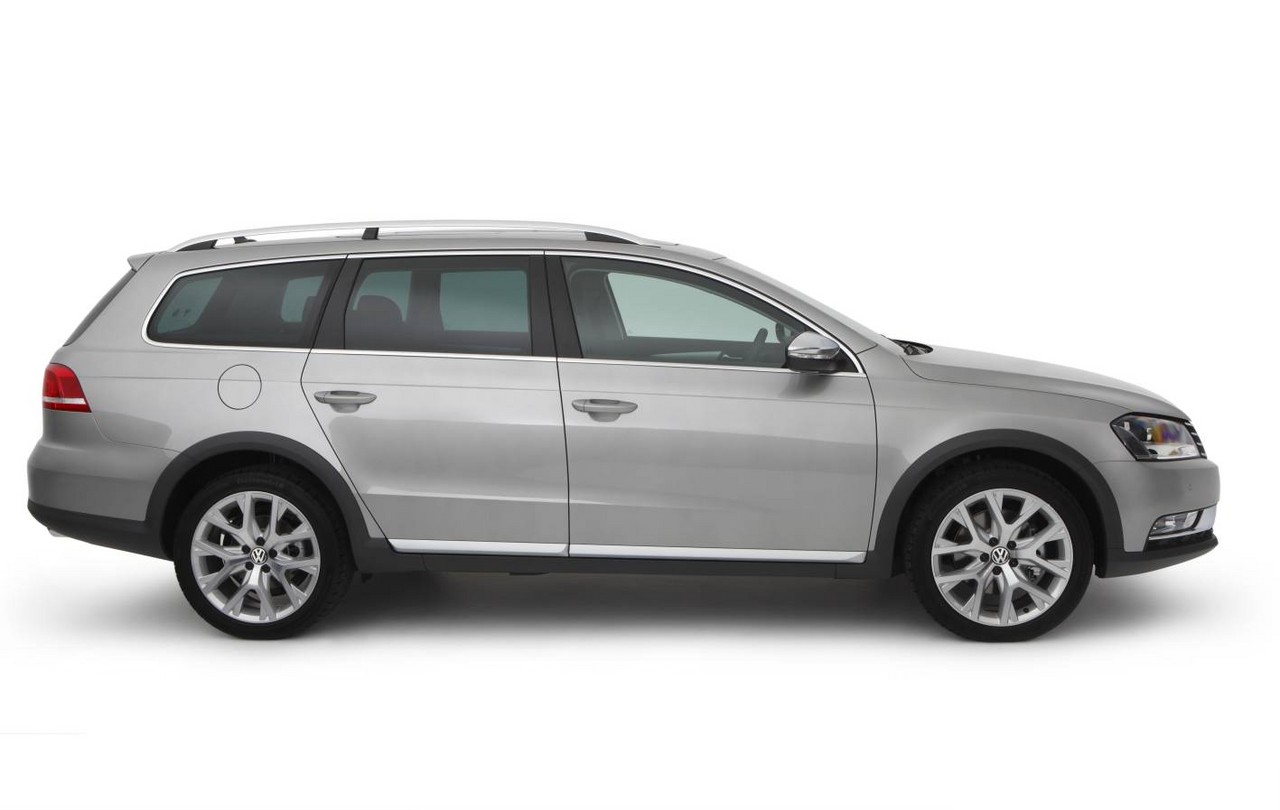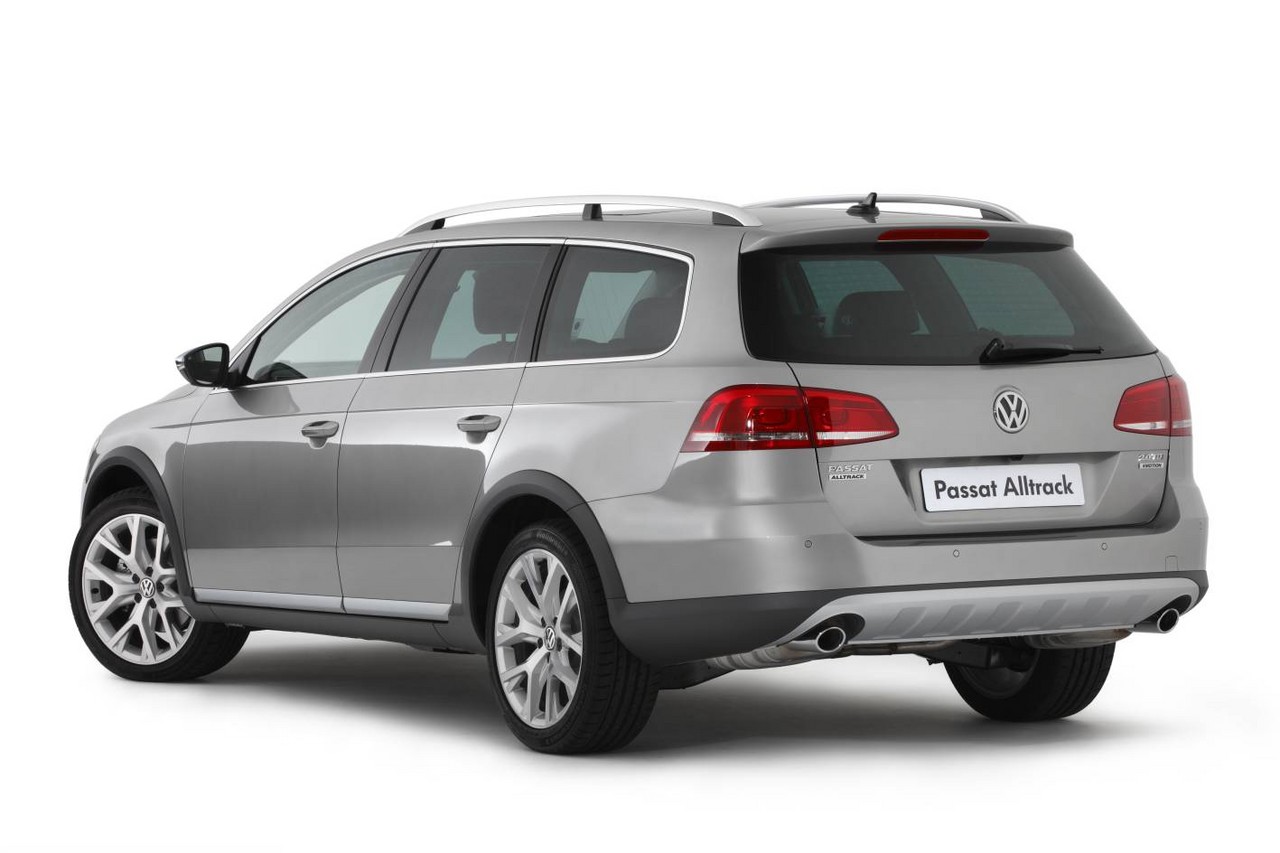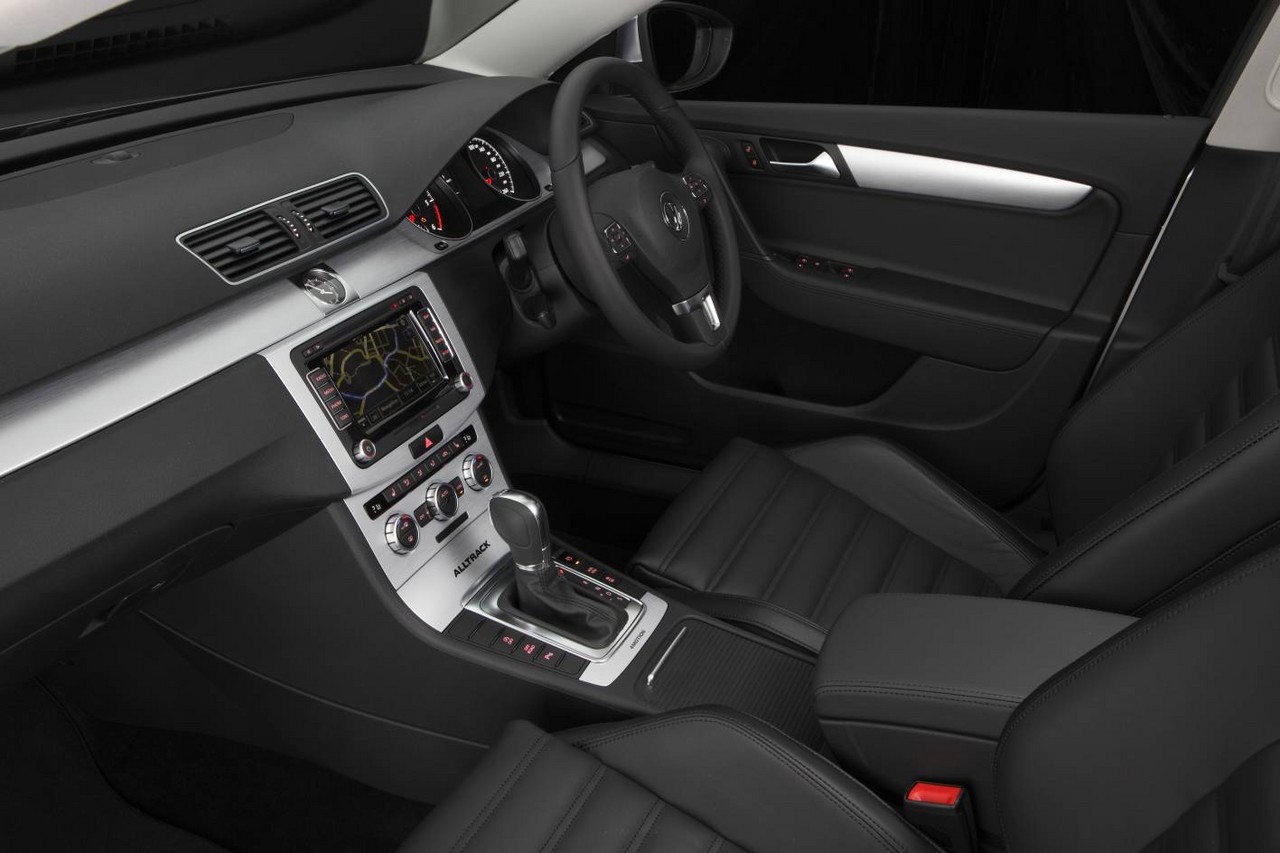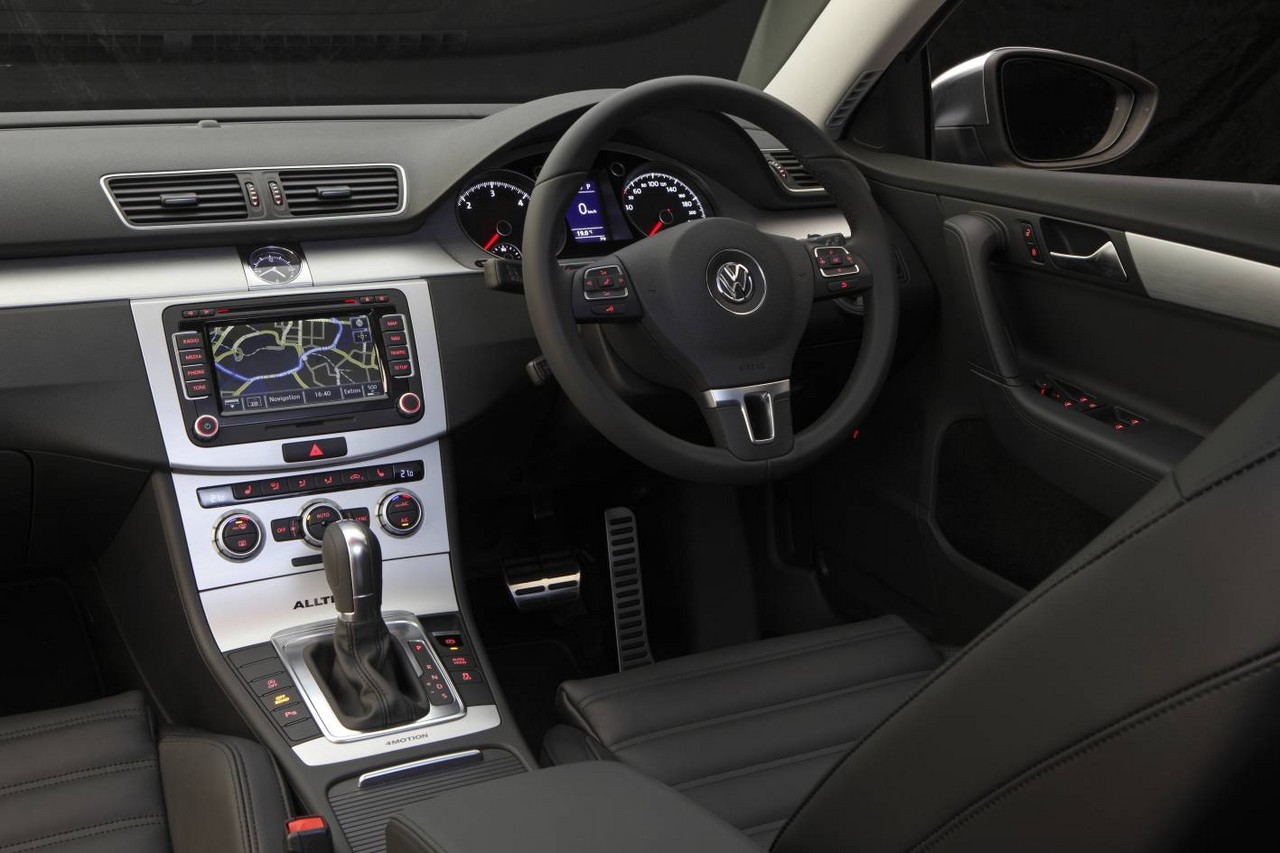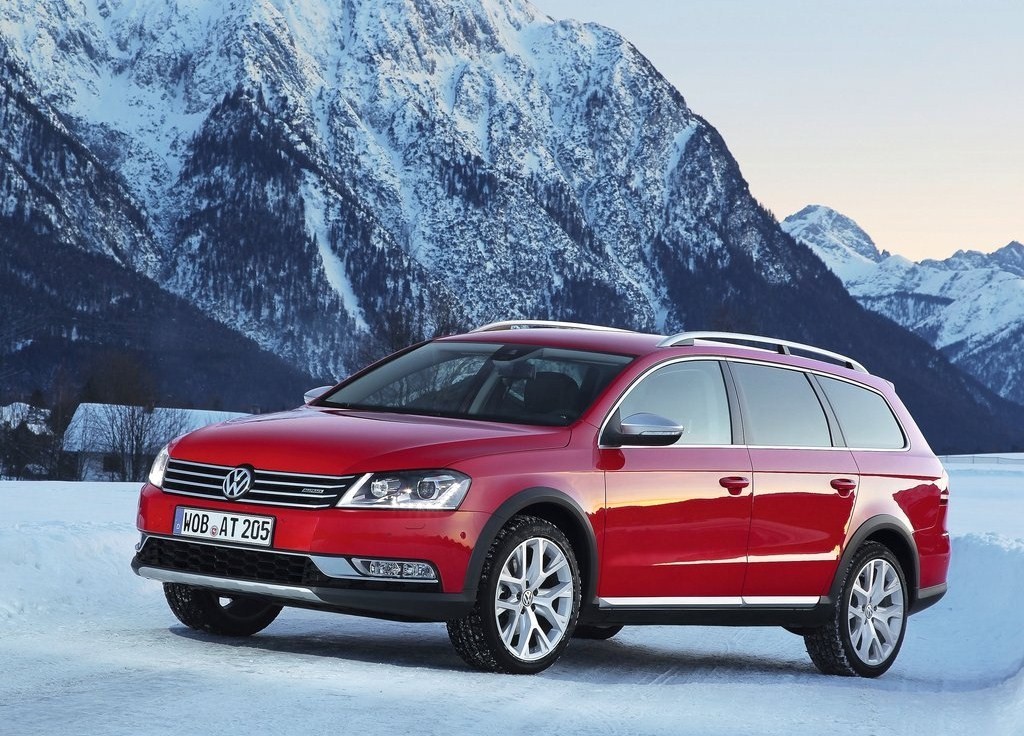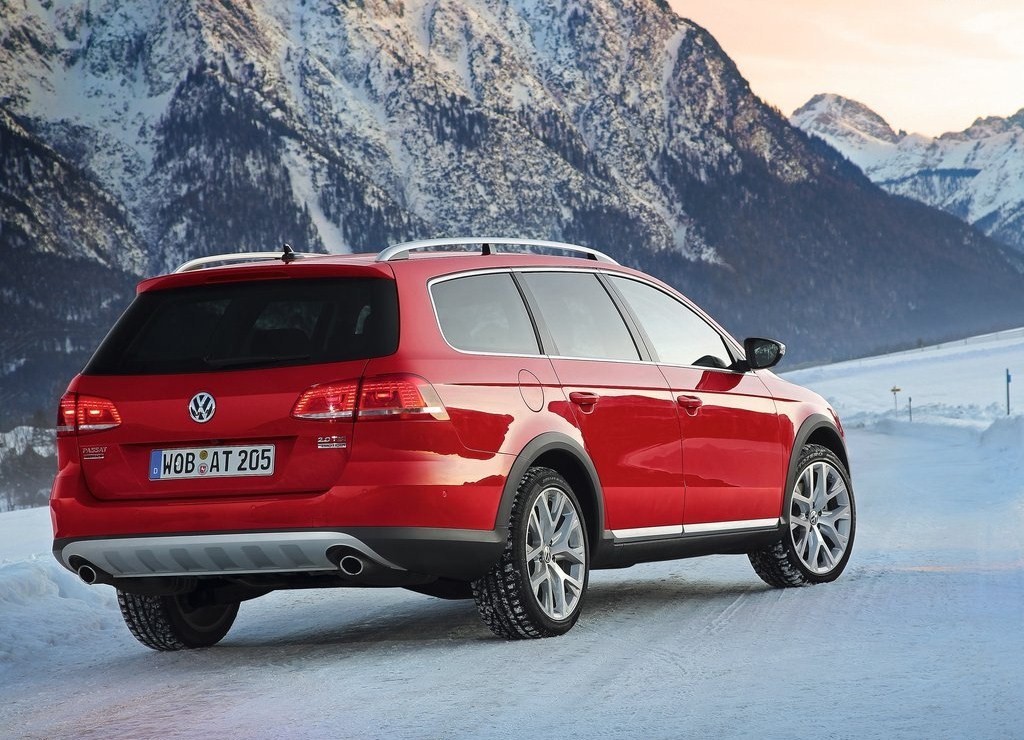
- Responsive and fuel-efficient 2.0-litre turbo-diesel engine
- DSG provides fast gear shifts
- Comfortable ride
- Spacious interior and cargo area
- High standard of interior fit and finish
- Slight turbo lag for diesel engine
- DSG hesistant when accelerating from rest
- Flat front seats lack support
Overview
Released in October 2012, the Volkswagen Mk.6 Passat Alltrack was a mid-size, all-wheel drive wagon. Manufactured in Germany, the VW Mk.6 Passat Alltrack was powered by a 2.0-litre turbo-diesel engine that was mated to a six-speed double clutch transmission. Although there were no generations of the Passat Alltrack prior to the Mk.6, it was so called because it was based on the Mk.6 Passat wagon .
TDI engine
The Passat Alltrck’s 2.0-litre turbo-diesel engine had common-rail injection, double overhead camshafts, four valves per cylinder and a compression ratio of 16.5:1. The engine also featured Volkswagen’s Start/Stop system which enabled it to shut down when the vehicle was stationary in traffic.
Dimensions
Compared to the Passat wagon, the Mk.6 Passat Alltrack was the same length (4771 mm) and width (1820 mm), while wheelbase length (2711 mm) was also unchanged. However, ground clearance for the Passat Alltrack was increased by 30 mm to 165 mm. With the rear seats in position, the Passat Alltrack had cargo capacity of 588 litres, though this increased to 1716 litres when the rear seats were folded down.
The Passat Alltrack had a maximum payload of 656 kg and maximum braked towing capacity of 1800 kg.
Suspension
The Passat Alltrack had MacPherson strut front suspension with lower A-arms and four-link rear suspension, the latter with an isolated subframe to which the upright was joined in a transverse direction. Adaptive Chassis Control was available as an extra-cost option and provided variable suspension damping according to road conditions and the driving situation (i.e. acceleration, braking and steering inputs). Adaptive Chassis Control also had three selectable modes: Normal, Sport and Comfort.
| Engine | Trans. | Years | Peak power | Peak torque | |
|---|---|---|---|---|---|
| Passat Alltrack | 2.0-litre CFGB turbo- diesel I4 |
6sp DCT | 2012 | 125 kW at 4200 rpm | 350 Nm at 1750-2500 rpm |
| 2.0-litre CFGC turbo- diesel I4 |
6sp DCT | 2013-15 | 130 kW at 4200 rpm | 380 Nm at 1750-2500 rpm |
4MOTION all-wheel drive system
In normal conditions, the VW Passat Alltrack’s 4MOTION all-wheel drive system provided a 90:10 front:rear torque split to minimise fuel consumption. The rear wheels, however, could be engaged as required by an electrohydraulic clutch. Unlike viscous couplings, the electrohydraulic clutch did not require a speed difference between the front and rear axles as pressure was provided by an electric pump.
The Passat Alltrack was also fitted with multi-plate clutch in the rear differential and an XDS electronic front differential lock which enabled the front wheels to be individually braked with the effect of transferring torque to the opposing front wheel (i.e. cross-axle torque transfer).
Safety equipment
Standard safety equipment for the Volkswagen Mk.6 Passat Alltrack included dual front airbags, side airbags for front and rear occupants, full-length curtain airbags (i.e. for front and rear occupants), ABS, electronic brake force distribution, brake assist, electronic stability control, traction control, active front seat head restraints, front seatbelt load limiters and front and outer rear seatbelt pretensioners. The Passat Alltrack also had a driver fatigue monitoring system which would provide an acoustic signal and visual message to warn the driver.
Optional (i.e. extra-cost) safety equipment included:
- Lane Assist: a using a camera to recognise lane markings, Lane Assist would detect unintentional lane drifting or changing and provide corrective steering actions for up to eight seconds;
- Side Assist: using radar sensors, Side Assist would alert the driver of vehicles located in the vehicle’s blind spot or approaching from the rear by flashing LEDs in the door mirrors;
- Adaptive Cruise Control (ACC): when activated, ACC would maintain a pre-set distance to the vehicle ahead;
- Front Assist: operating between speeds of 30 km/h to 200 km/h, Front Assist relied upon a front-mounted radar and would warn the driver if a collision was anticipated and, subsequently, initiate an autonomus braking application with a ‘jolt’ of the brake pedal; and,
- City Emergency Braking: operating at speeds of up to 30 km/h, City Emergency Braking would provide autonomous braking if a front-end collision was anticipated.
Features
Standard features for the Volkswagen Passat Alltrack included 17-inch ‘Valley’ alloy wheels with 225/50 R17 tyres, an eight speaker sound system with a CD/DVD player, MP3-compatibility, auxiliary inputs (3.5 mm/USB/SD card), a 30GB hard drive and Bluetooth audio streaming, a satellite navigation system with a 6.5-inch touch screen, dual-zone climate control air conditioning, a power adjustable driver’s seat and heated front seats, ‘Vienna’ leather seats, cruise control, front fog lights with static cornering lights, daytime driving lights, front and rear parking sensors, automatic headlights, rain-sensing wipers, 60/40 split and folding rear seats, a leather-wrapped steering wheel and gearshift, steering wheel audio controls, Bluetooth mobile phone connectivity, voice recognition (for navigation, telephone and radio functions), remote central locking, power windows and heated mirrors, an automatically dipping rear-view mirror, a height and reach adjustable steering wheel, power-operated park brake, height adjustable front seats, three 12 volt power outlets, a cooled glovebox, tyre pressure monitoring, roof rails, a trip computer, motion-sensing alarm and an immobiliser.
Volkswagen’s ‘Park Assist’ system was available as an extra-cost option. Park Assist could be activated at speeds of up to 40 km/h and would detect suitable parking spaces by using its ultrasonic sensors. To park the vehicle, the driver would engage reverse gear and the system would automatically steer – but not accelerate or brake – the vehicle into the parking space.
Brochure
Related links
- Press Kit: Volkswagen Mk.6 Passat Alltrack (October 2012)
- Volkswagen Australia: Volkswagen Passat Alltrack
- Wikipedia.org: Volkswagen Mk.6 Passat

